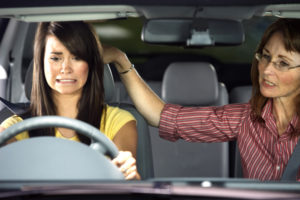
Learning to drive is a bit like a marriage, the real work starts once the honeymoon period is over. You’re now about to unleash yourself on roads, alone. There’s no longer any guidance. Below are
some tips to ensure safe driving.
- Get to know your car
So you’ve got a shiny new car. Don’t just get in and drive it. Sit in it. Turn it on. Look at the buttons. Learn what they do. Find the switches for the front and rear fog lights and learn to spot the corresponding warning lights on the instrument binnacle. Where’s the hazard light button? How do you turn off that annoying RDS radio traffic alert nonsense? These are all little things, but failure to instinctively know how to activate or deactivate one of these features in a hurry could cause you to become distracted and lead to an accident.
· Go on a track day
Driving fast on the public road is just asking for trouble, so it’s a good idea to satisfy your lust for speed in a safe environment. Not only are track days a great adrenalin rush, they also teach you valuable lessons on how cars handle on the limit. Trust us, your Ford Fiesta might feel like it’s as agile and grippy as an F1 car when pottering around town, but it becomes a totally different animal when asked to respond at high speeds. Learn its limits – and yours – in a place where it’s safe.
· Check your blind spot. Every time
Your mirrors do a good job of showing you what’s behind you, but they can’t show you what’s just outside of your peripheral vision. Your blind spot, as it’s known, is a pretty large area – big enough for bikes and cars to lurk undetected until the moment you turn right and then bang; either someone’s dead or your car’s all mangled. Do yourself and everyone else a favour – check your blind spot every time you change lane or turn right.
· Don’t drive in someone else’s blind spot
Just because you’re smart enough to check your blind spot doesn’t mean everyone else will. The number of people who change lanes without looking properly is quite staggering, so put the onus on yourself to stay out of trouble. If you notice you’re cruising along to the right of and slightly behind another car, there’s a good chance they can’t see you. Either accelerate to pull alongside or in front of them, or drop back until you’re sure you can be seen in their mirrors.
It would appear almost nobody knows this one, but the left lane on the motorway is for normal driving,All others are for overtaking. Highway code rule 238 states: “You should drive in the left-hand lane if the road ahead is clear. Return to the left-hand lane once you have overtaken all the vehicles or if you are delaying traffic behind you.”
· Drive in bad weather. Now.
Sure, going out in rain, sleet, snow or icy conditions can be terrifying, but the best way to learn how to deal with those situations is to go out there and get your hands dirty. Try to feel how the inclement conditions affect the car, how braking distances are increased, how grip is reduced and try to appreciate the fact you’ll have to alter your driving style to deal with those conditions. Doing so on your own terms and at a time of your choosing means you’ll feel more comfortable and more confident when conditions take an unexpected turn for the worse.
· Put the phone down.
Using a handheld phone is illegal, so don’t even think about it. And no, putting your handset on speakerphone and holding it just in front of your mouth as you drive isn’t fooling anyone. Even hands-free car kits aren’t as safe as you think. The mental workload required to have a conversation and process additional thoughts can slow your reaction times, causing you to miss things in front of you – like little Johnny crossing the road.
